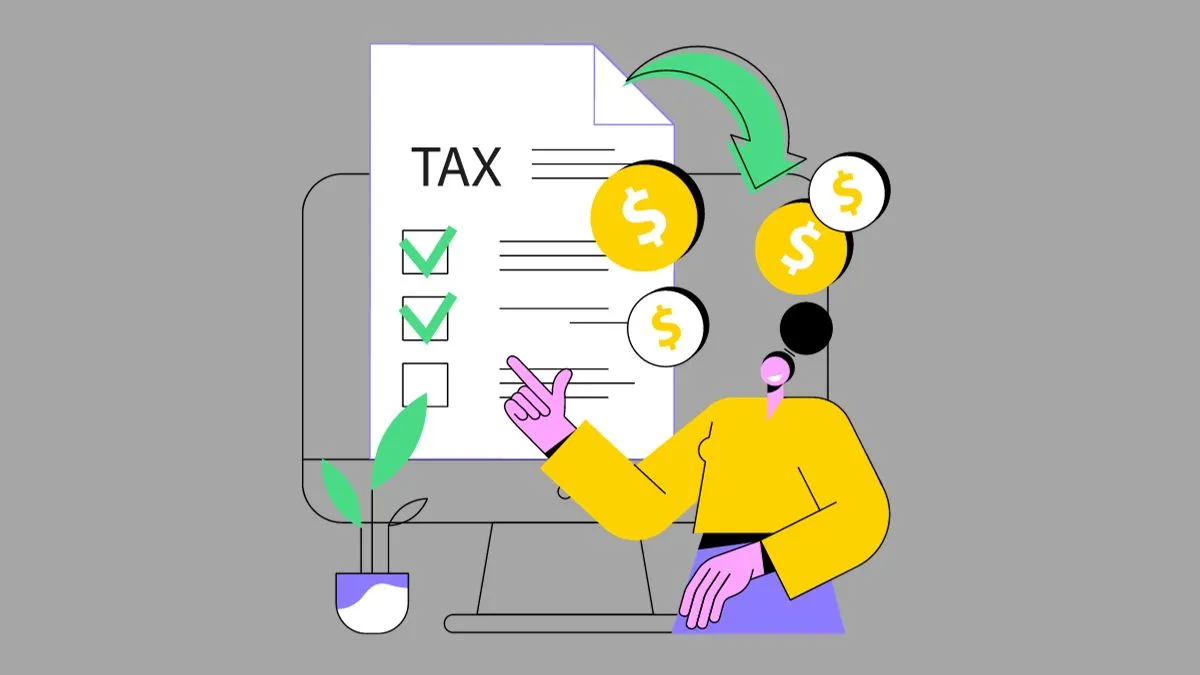Taking out your first loan can be overwhelming and confusing. So many odd terms get used that you may feel lost. But learning key details early helps steer clear of issues later on. As a beginner, you should not feel silly asking questions.
It’s normal to feel confused! Find out what you are responsible for repaying over time. Make sure the monthly amount works with your income and other expenses you cover. Understanding the basics helps first-time borrowers feel confident rather than anxious when borrowing money.

Types of Loans You Can Get
There are two common categories of personal loans:
Secured loans: require an asset like a house or car to be used as collateral or security. If you can’t repay the loan, the lender can take the item. Examples are mortgages and auto loans.
Unsecured loans: Do not use collateral. Lenders approve you based on your credit score. Examples include personal loans, student loans, and credit cards.
Important Loan Details
With any loan, make sure to check:
The Total Loan Amount
The total loan amount tells you how much money you are borrowing. This number impacts your monthly payments. Make sure you only borrow what you need and can realistically pay back on time based on your income. Going over your budget gets you in trouble fast. Only use loans for important purposes, not small everyday items. Review the loan amount to ensure you understand the total debt you take on.
Interest Rate
The interest rate shows how much extra you pay to borrow the money, usually shown as a percentage. It gets added over time to the amount you borrowed. Make sure you know if the rate is fixed over the full repayment term or if it can go up. Higher rates increase your total payment more. Check that the rate seems fair for the loan type compared to options from other lenders.
We advise first-time borrowers to get prequalified for personal loans to preview potential offers. The prequalification process runs an initial soft credit check, estimating loan terms you may qualify for based on your financial profile, without a hard inquiry into your score. If the details fit your budget and goals, you can then complete the full application confidently.
Fees
Lenders charge extra fees to process loans. One-time fees when starting the loan cover administration costs. Monthly or annual maintenance fees are added to your payment over time. Understand exactly which fees apply so you can accurately compare options. Fees also impact the total amount you end up paying versus just the loan principal.
Repayment Terms
The repayment terms outline when and how much you pay each month. Having a set schedule with even more predictable payments helps manage a loan wisely over time. Make sure the monthly due dates and amounts fit your budget to avoid falling behind. You can often choose terms that work for your situation when first getting the loan.
Late Payment Penalties
If you miss making your regular payment on time, extra late fees get added to the loan balance owed. These penalties quickly make loans more expensive. Even one single late payment can hurt your credit score, which impacts you negatively later too. So understanding the exact late fee amounts reminds you to avoid them within your financial plan.
Knowing these details helps avoid surprises like higher payments or unexpected charges. Making sure you can repay on time and within your budget is key.
In 2023, the average personal loan balance went up 6.3% to $19,402, according to Experian. As this number rises, more first-time borrowers can benefit from understanding their loan responsibilities before signing an agreement.
Ask questions upfront if any information is unclear when getting your first personal loan. Being a well-informed consumer helps you borrow confidently within your means as you build your financial foundation.
Common Loan Types for First-Timers
| Loan Type | Average Amount | Typical Use |
| Personal Loans | $2,500 – $35,000 | Debt consolidation, home improvements, medical bills |
| Student Loans | $5,800 (yearly average) | College or vocational education |
| Credit Cards | $6,344 (average balance carried) | Building a credit history and daily purchases |
| Auto Loans | $33,117 (average new car) | Buying a new or used car |
Choosing the right loan depends on your financial situation and what you need the money for. Personal and student loans tend to offer better rates than credit cards.
“Credit card APRs averaged around 23% as of 2024.” – Experian
Interest Rates and APR Matter
Interest rates largely determine the cost of borrowing money. Rates vary by:
- Loan type: Credit cards carry higher average rates than auto, personal, or student loans.
- Credit score: Borrowers with higher scores qualify for lower rates.
- Economic factors: Rates increase when the Federal Reserve raises benchmark rates.
The annual percentage rate (APR) is another key metric that accounts for interest rate plus loan fees. Always compare APRs rather than just interest rates.
Focusing only on interest rates can obscure the true cost of a loan. Understanding both is vital for first-timers.
Payment Periods and Early Repayment
Auto and personal loans tend to have set repayment periods of 2-7 years. Minimum monthly payments on credit cards and student loans vary based on the balance carried.
When reviewing repayment terms, note:
- Monthly payment amount
- Total months to repay
- Option for early repayment
Early repayment can save you money on interest charges, but it may come with penalties, especially for mortgages and auto loans. Be sure to carefully crunch the numbers before proceeding.
“Average monthly payment for new auto loans rose 7.1% from Q3 2022 ($588) to Q3 2023 ($630).” – Experian
The Role of Credit Scores
Credit scores indicate trustworthiness as a borrower based on repayment history. Common scoring models:
- FICO® Score: Ranges 300-850. Most lenders use this.
- VantageScore: ranges from 300-850. Factors in rent and utility payments.
In general, scores above 670 qualify for better loan rates and approval odds. Scores below 580 make approval difficult.
Having no credit history also poses challenges. Steps like becoming an authorized user on someone else’s credit card can help build initial scores.
“Average FICO® Score in the U.S. increased to 715 in Q3 2023.” – Experian
Getting Approved
This process involves a thorough evaluation of the applicant’s financial stability and creditworthiness to determine if they qualify for a loan and under what terms. Here’s an elaboration of the key elements mentioned in the provided statement:
- Income level: An applicant’s income level is a fundamental factor in assessing their ability to repay a loan. Lenders want to ensure that borrowers have a stable source of income to cover their loan payments. This includes wages, salary, self-employment income, rental income, or any other form of regular income.
- Employment status: Lenders need to know an applicant’s employment status to gauge the stability of their income. Applicants with steady, long-term employment are generally considered lower risk compared to those with sporadic employment or frequent job changes.
- Existing debts: An applicant’s existing debts play a significant role in the loan application process. Lenders assess the borrower’s debt-to-income ratio (DTI) to understand their current financial obligations compared to their income. High levels of existing debt can indicate a higher risk of default, as it may become challenging for the borrower to manage additional loan payments.
- Credit score: The credit score is a numerical representation of an individual’s creditworthiness based on their credit history. Lenders use credit scores to quickly evaluate the applicant’s risk level. Higher credit scores are generally associated with lower risk, while lower scores may indicate a higher risk of loan default. A good credit score can also lead to more favorable loan terms, such as lower interest rates.
To verify the information provided by the applicant, lenders require supporting documentation. These documents may include:
- Pay stubs: These provide evidence of the applicant’s income and employment status. Pay stubs typically detail the individual’s earnings, deductions, and other relevant employment information.
- Tax returns: Tax returns offer a comprehensive view of an individual’s financial situation, including income, deductions, and any additional sources of revenue or expenses. Lenders use tax returns to verify income and assess the applicant’s financial stability.
- Credit reports: Lenders obtain credit reports from credit bureaus to review an applicant’s credit history. This report includes information about the applicant’s past and current credit accounts, payment history, outstanding debts, and any derogatory marks (e.g., late payments or bankruptcies). Credit reports help lenders gauge creditworthiness and predict the likelihood of on-time loan payments.
- References: Some lenders may request personal or professional references to corroborate an applicant’s character and financial stability. While references are not typically the primary basis for loan approval, they can provide additional context for the lender’s assessment.
Meeting underwriting criteria improves the chances of getting approved and securing favorable loan terms.
FAQs
What should first-time borrowers consider before applying?
Before borrowing, have a stable income to afford payments. Understand exactly what the money will be used for and how it aligns with longer-term financial goals.
How can first-time borrowers secure the best loan terms?
Start building credit early with a card. Become an authorized user on someone else’s card. Pay all bills on time. Shop for rates from multiple lenders. Consider adding a cosigner with strong credit.
What mistakes should be avoided?
Steer clear of payday loans or car title loans with extremely high-interest rates. Don’t take out more than what is needed. Missing or late payments will damage credit scores.
Conclusion
Navigating your first loan? This guide’s been your beacon, spotlighting everything from loan types to key terms like interest rates and repayment strategies. Understanding these essentials empowers you to make choices that sync with your financial ambitions.
Key takeaways? Scrutinize interest rates and APR to grasp the real cost of borrowing. Your loan duration and early repayment options can also sway your financial journey, saving or costing you more.
View this guide as your borrowing blueprint. With this wisdom and a keen eye for details, you’re equipped to make savvy financial moves. And remember, seeking professional advice when puzzled is a smart play. Being informed is your ace in the financial game.





